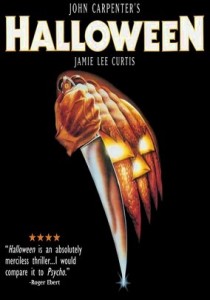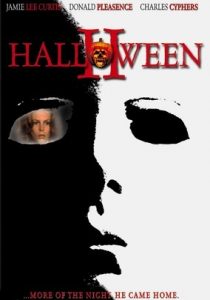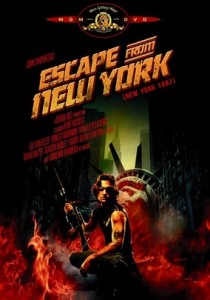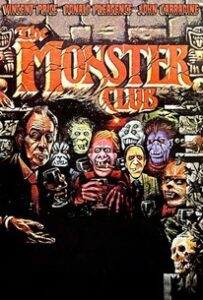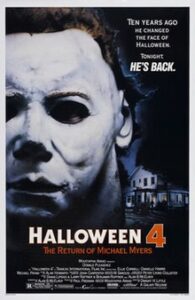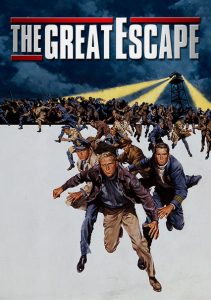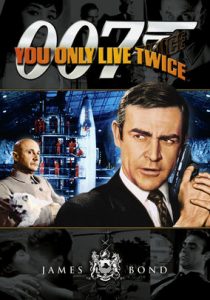Halloween-1978
Director John Carpenter
Starring Jamie Lee Curtis, Donald Pleasence
Top 250 Films #9
Top 40 Horror Films #3
Scott’s Review #114
Reviewed July 16, 2014
Grade: A
Halloween is an iconic horror film from 1978 that set the tone for the barrage of slasher films to follow throughout the 1980s and into the 1990s.
Today, the film continues to hold up incredibly well, and I am proud to list it as not only one of my favorite horror films (which I watch religiously every Halloween) but also one of my favorite films of all time.
The focus is on style and substance over gore (the film contains little of it), and the score is one of the scariest and most effective in cinematic history.
The premise of the film is simple- a homicidal maniac is on the loose in a sleepy little town named Haddonfield, Illinois, targeting three female babysitters on a crisp Halloween night.
The audience knows that the six-year-old little boy dressed as a clown on a dark Halloween night years ago, who butchered his older sister to death, is the now grown-up culprit.
What we do not know, nor should we, is what his (Michael Meyers’) motivation is. This confusion only adds to the impact.
Subsequent remakes have added complexities to the character, albeit unnecessarily so; however, in the original, we see a seemingly happy child with stable parents and a good life.
Similar stories have been told throughout film history. But Halloween is simply one of the greatest horror films ever made.
As simple as the story is, the way the film is made makes it a masterpiece. Everything about Halloween is mesmerizing – the lighting is perfect, the ambiance, the brilliant, scary musical score, the battle between good and evil, and the feeling of a chilly Halloween night.
Highly unusual for its time, the point of view of the killer and heavy breathing are prevalent throughout the film, which will startle and scare the viewer. The opening shot is through the eyes of a masked six-year-old kid wearing a clown mask.
The unique technical aspects continue to evolve.
Director John Carpenter had a vision for this film, and thankfully, no studio influence compromised it, as it was an independent film on a shoestring budget.
The Hitchcock influences are evident in the character names, such as Sam Loomis, and in many scenes where someone watches the action or peers around a corner or through a window, making the viewer anxious and nervous.
Set in small-town USA, a frightening element of the film is that it could happen anywhere, and the location is ingenious. There is very little blood, let alone gore. It is needless. It is the creepiness that makes the film brilliant.
The three teenagers are perfectly cast- Jamie Lee Curtis is the serious bookworm, P.J. Soles and Nancy Keyes are the flirtatious bad girls. Still, the chemistry is excellent, and the audience buys them as best friends.
The jump-out-of-your-seat moments are incredibly well-timed, and it is one of the few genuinely scary films.
Forget the horror genre alone- Halloween (1978) is one of the greatest films ever made.
